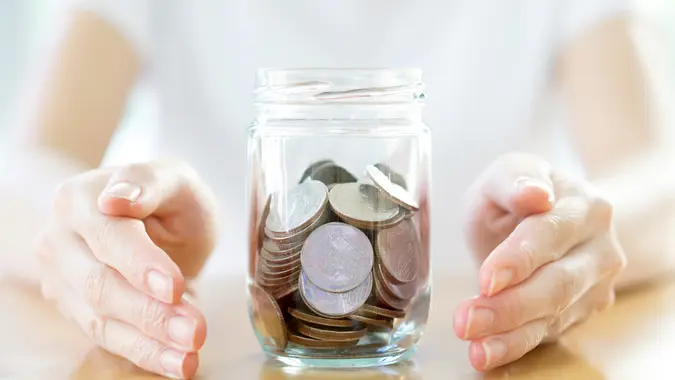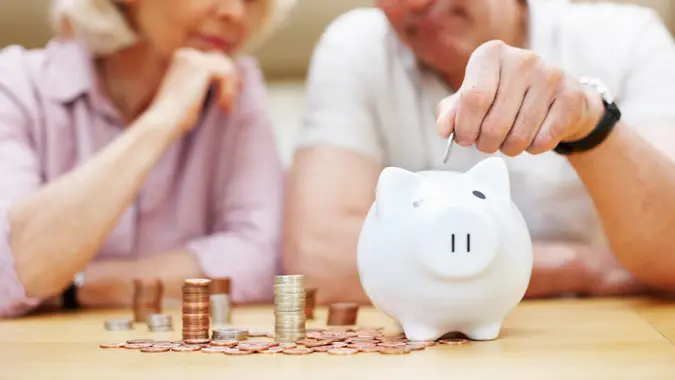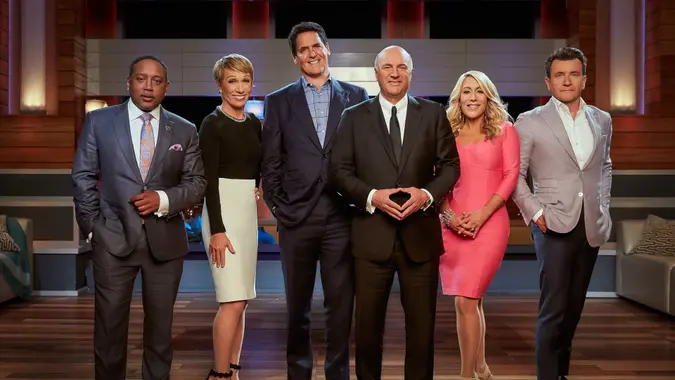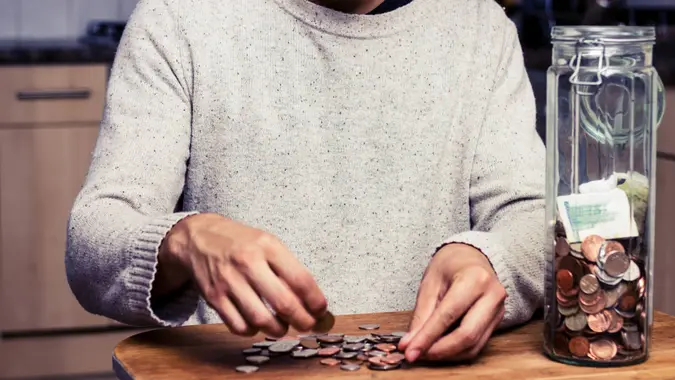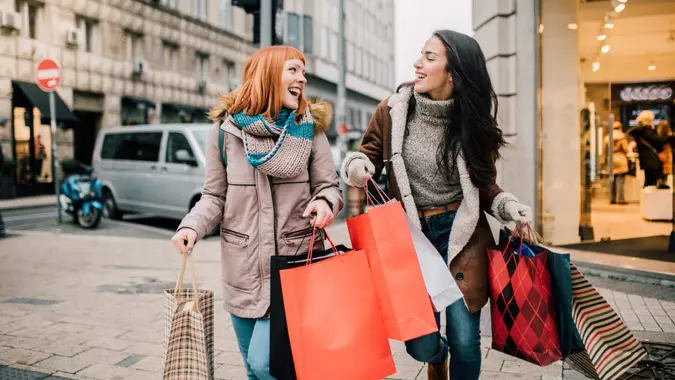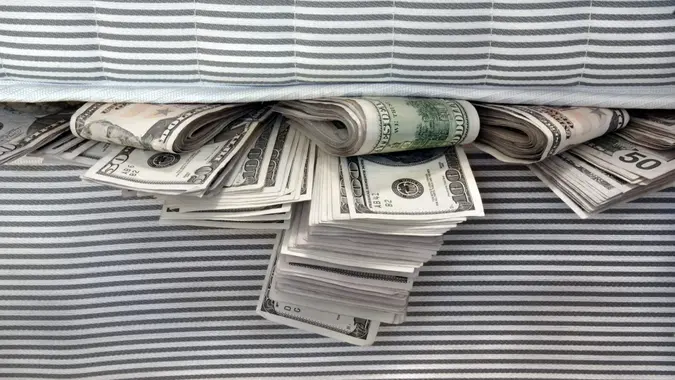I’m a Financial Advisor: Paying for These 6 Things in Cash Can Stop Impulse Spending

Commitment to Our Readers
GOBankingRates' editorial team is committed to bringing you unbiased reviews and information. We use data-driven methodologies to evaluate financial products and services - our reviews and ratings are not influenced by advertisers. You can read more about our editorial guidelines and our products and services review methodology.

20 Years
Helping You Live Richer

Reviewed
by Experts

Trusted by
Millions of Readers
Paying for everyday expenses in cash can help curb impulse spending and ensure you have enough money for other necessities. It can also help if you’re trying to free up some extra cash for debts or other long-term financial goals.
While you can’t buy everything in cash, going to the grocery store or local shopping center knowing you only have $20, $50 or $100 to spend could stop you from grabbing extra snacks or other things you don’t really need. It could even keep you from picking up that cool-looking coffee table or cute sweater that’s going to sit in your garage or closet for months or years to come.
But what are the top things you can pay for in cash to stop impulse spending? And what are some other ways to try to cut back on buying things you really don’t need or even want?
GOBankingRates spoke with Garret Smith, a veteran financial advisor and CCO at Ascend Investment Partners, to find out. Here’s what he said.
What To Buy in Cash To Curb Impulse Spending
Here’s a look at items you might be better off buying in cash.
Coffee
“Small, frequent purchases add up,” Smith said.
Paying in cash for things like coffee can highlight the cumulative cost of each one.
A latte can easily cost you $3 to $5, not including any additional shots or add-ins. If you go once a day, five days a week, you’re looking at $15 to $25 a week, or $60 to $100 a month on cafe runs alone.
Some people swing by the cafe whenever they’re out running errands, too. If you make yourself bring only cash whenever you go out, you could cut down on some of those costly pit stops.
Snacks
Like coffee, Smith said that snacks — such as those you grab in the checkout line at the grocery store — can really add up. When you bring a set amount of cash on your grocery trip, you won’t have to worry so much about spending an extra $2, $5 or $10 on snacks.
The potential downside, of course, is that you run the risk of not having enough money for your entire grocery run. To combat this, make a list of what you need and stick to it when you go. While you’re at it, shop the deals to get the best — and lowest — prices possible.
Dining Out
The cost of food has risen a lot in recent years, but the cost of dining out is especially high. In 2022, which is the most recent data available, the average American spent $3,639 a year on food away from home. That’s $303 a month.
If you find yourself going out to eat a lot, either with friends, partners, or even alone, you may want to start bringing cash to limit how much you spend.
“It’s easy to overspend in social settings,” Smith said. “Cash payments can help keep such outings within budget.”
By bringing cash, you might have to forego that extra drink or appetizer. You can still bring the $15 or $20 needed for the entree while keeping costs down.
Personal Care Items
Certain personal care items are essential, but others really aren’t. For example, luxury cosmetics or moisturizers could be avoided if you’re trying to save money. Or you could limit how often you splurge on them.
This doesn’t mean you have to cut them out completely. Just set a budget.
“Setting a cash limit for nonessential personal care items can prevent overspending on luxury or impulse buys,” Smith said.
Books and Magazines
Books and certain magazines can be personally enriching or, at the very least, entertaining to peruse. But they’re also expensive when purchased new.
Hardcover books can easily run you $15 to $30, while paperbacks usually cost a little less. Many of the magazines you see in the checkout line at the store cost around $10 to $20.
Smith suggested bringing cash with you when you go shopping to limit your splurges in this area. This is something you might want to do whether you’re going to the grocery store and happen upon books or magazines as you shop, or you’ve planned a dedicated trip to the local bookstore.
When you only have cash, Smith said you’re more likely to be mindful about what you pick up and add to your cart. After all, you only have a certain amount to spend.
Apparel and Accessories
“Fashion items are common impulse buys,” Smith said. “Using cash helps prioritize needs over wants.”
The Bureau of Labor Statistics (BLS) found that the average American spends $1,945 on clothes and related purchases each year. That’s about $162 a month.
If you find yourself frequently shopping for clothes, shoes or other accessories, try sticking with cash. This can be tricky if you’re shopping online, but it can help prevent impulse buys at the store.
Other Ways To Cut Back on Impulse Purchases
Since you can’t use cash for everything, and it’s still often a good idea to bring at least one credit or debit card with you — just in case — Smith proposed a few other ways to limit impulse spending. Here are just a few:
- Envelope budgeting system: Make separate budgets for things you want but don’t necessarily have to have and allocate some cash to each category. For online shopping, you can use a digital system — like a mobile wallet. For in-person purchases, you can use physical envelopes.
- Financial apps: Some budgeting apps offer real-time alerts based on your spending. This can help you keep track of how much money you still have for specific categories, and when you might be running low.
- Journaling or record-keeping: Smith suggested keeping either a physical or digital journal — or document — that records your purchases and the reasons why you buy what you do. This can help you build awareness of your spending habits, and potentially help you identify spending triggers.
- Certain accounts: Keeping your extra money in a savings account — or something similar — can make it harder to access when you’re shopping. This, in turn, can limit impulse buys.
 Written by
Written by  Edited by
Edited by 




